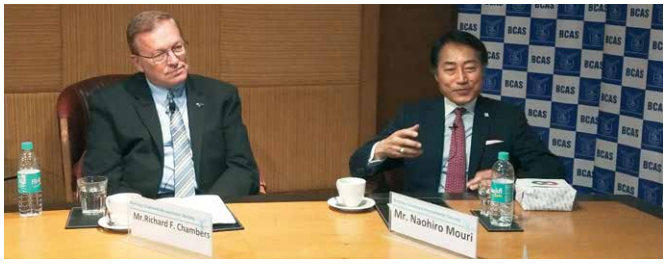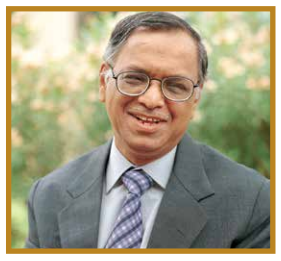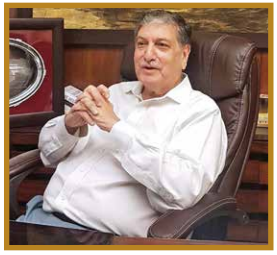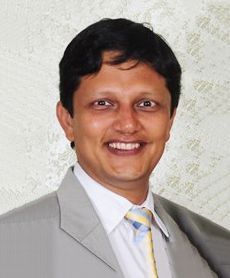Is Tax Binging On Your Earnings?
Will the FM be able to POP the CORNy tax system in the budget? These words were coined after the hullabaloo around GST on popcorn. However, this is also the state of the tax system today: not considering popcorn to be popcorn. It treats it as a staple (unpackaged food item), or namkeen (packaged) or sugary (caramelised) item to levy different tax rates.
For normal mortals — popcorn is popcorn. Fitment seems like an excuse when the difference is 5 per cent to 18 per cent. Then why would Babus think that every form of popcorn deserves a different rate with so much rate difference? One of the reasons I can think is to keep the law packed in complexity so that when it is unpacked there are high chances of litigation and collection of tax on appeal. For Babudom, litigation is akin to caramelising (pun intended), it keeps their importance intact and keeps their tax targets. Let me present another perspective to litigation as a borrowing technique.
Let us ask whether tax ligation is a borrowing technique. If one sees parts of tax collection from litigation as borrowing, you will understand that government interest to lower litigation is about 4.2 per cent (pun intended). How? Firstly, the Union Budget doesn’t factor pending litigation amounts as contingent liabilities or provisions. Secondly, there is 20 per cent pre-payment before the assessee litigates and zero percent when the government litigates. Thirdly, interest on refund of tax is 6 per cent, while interest on late payment of tax is 12 per cent. Interest on refund is taxable at, say 30 per cent. Interest on late payment if grossed up, will be about 17 per cent (as it is disallowed for tax purposes and if tax rate is assumed at 30 per cent). So net interest on refund is 4.2 per cent post-tax at a 30 per cent rate (because the government receives 1.8 out of 6 back as taxes), and you lose 17 per cent when you pay interest for late payment. What a spread that is! This is as unfair as it is beneficial to the government, such that Sarkar will favour sitting on disputed tax money for long at a very low rate of interest. Lastly, connect another dot: amounts and appeals pending at CIT Appeals (2024): 549,0421 appeals (₹14.2 Lac Crores), at ITAT (2022): 26,812 cases (₹3.1 Lac Crore), High Court: 29,763 cases (₹3.3 Lac Crores) and Supreme Court: 4,108 cases (₹0.3 Lac Crores). Total disputed amounts come to about ₹21 Lac Crores. Out of these disputed amounts perhaps ₹7 to 9 lac crores along with interest could become payable by the government to taxpayer. Assuming that taxes on some of these amounts are already paid, TDS collected, 20 per cent paid as prepayment for litigating and so on, the government may be sitting on ₹7-9 Lac crore of off balance sheet amounts, which may become payable. Some reports say Income Tax litigation alone is about 9.6 per cent of India’s GDP2. This is more than 64 per cent or more of the 2024 Union Budget (₹48 Lac Crore). So why would Sarkar not want to drag litigation until infinity?
1CBDT Central Action Plan 2024-25
2 Parliamentary Standing Committee Report 2024-25 dated December 2024, amounts are before VSV-2 Scheme
Common taxpayer’s acquiescence of obfuscated tax law is only a sad spectacle of helplessness and not adulation or acceptance. The taxmen, in the meantime, meet their tax targets, often by taxing every activity and even by false demands and litigation to collect money which is often put to suboptimal use, purchase of votes and of course probable future refunds. This mass delusion of over-taxation perpetuated by the finance ministry makes“आयकर” (tax on income) feels like “अतिकर” (excess of taxation) in quantum and complexity.
Over-taxing, a small minority with high rates has been the Indian tax department’s maxim and also a cause of tax evasion. In a conversational format like MrVaze uses in his columns in BCAJ, a common taxpayer (TP) asked a tax expert (TE): How come the Sarkar taxes the same money multiple times? Say I have R10,00,000. When I get it, that amount is taxed. When I spend it, it is taxed. If I spend on things like vehicles or property, the same amount becomes the basis of taxation again with other smart names like road tax or stamp duty. “Well” said the TE: “everything is taxed, including breathing because pollution in the air due to Sarkari apathy, will result in future taxes recovered from your medical treatment”. The TP said, “If I have paid lifetime road tax, why do a pay a toll to cross WorliSealink – is it not a road? The amused TE said: “no it’s a favour from politicians and Babus (who used your money to build it) that they built it for you and are allowing you to use the bridge.” Then the TP asked: “I bought a Maruti Car after saving for it worth Rs. 10.62 lacs base price. Why was I charged ₹4.76 Lacs as GST (45 per cent) and ₹1.89477 Lacs as RTO tax (18 per cent), totalling to 63 per cent on the base price of car?” TE said: Well this GST is charged because a car is considered a luxury for decades and therefore you pay sin tax rate!
A person in middle-income bracket/salary class pays Profession tax, GST, Income Tax, Stamp Duty, STT, Water tax, Road Tax, Toll Tax, Sales Tax / Excise on Fuel. The question is what total percentage should one pay as taxes by whatever name called? It also poses a question of whether one works and lives for the government as itsकरदास(tax slave) or one is really aकरदाता(taxpayer)? Should the Sarkar give a deduction of these taxes in ITR so that total taxes do not exceed a certain percentage of income for the common taxpayer? Masquerading levies by different names, such as state / central / local / road tax, etc., is a tax atrocity on middle-income group that is trying to improve the quality of their life, live with dignity, face inflation, become financially stable and bring their family out of lack.
Now, let’s come to the final point: Tax GDP ratio.SurjeetBhalla, a former EAC member of Modi 1.0 wrote an article in a national daily last week. India’s personal income tax to GDP has reached 3.9 per cent. Eastern Europe is highest at 3.4 per cent. China is at 1.1 per cent, Vietnam at 1.8 per cent, Brazil at 3 per cent and Mexico at 3.4 per cent. To counter the argument that countries find other taxes to meet their needs, he gives the total taxes (state / centre / local / wherever) to GDP ratio. There, India tops even the developed countries and is likely to cross 19 per cent of GDP. East Asia is at 13.5 per cent, China at 15.9 per cent, and Vietnam at 14.7 per cent. Countries like Korea and the US with per capita income more than eight times higher are at 20 per cent and 19 per cent of GDP, according to Bhalla.
It’s not that middle income does not want to fend for those in need. It’s also not that the government has not done a good job mostly. At the same time the government should not give the excuse of ‘compulsion’ all the time. The question to the government is best put in the words of Thomas Sowell: what exactly is ‘your fair share’ of what ‘someone else’ has worked for. To cut to the chase, we need more balanced, realistic and innovative tax system that takes care of those who pay taxes.
Finally, lets end with the debate on tax rate and tax base. We hope that some other advice of Kautilya, who is quoted by the FM will be taken this time. King should, by his orders, take from his subjects, very small amounts of taxes[ 7.129]3. The tax rate should not be detrimental to the tax base, and they should be rather conducive to the tax base. We hope that tomorrow, the FM madam will announce a Budget that will make the taxpayer feel like there is also a “Laadkaa Taxpayer Yojana” and will spill into the upcoming Income Tax Code!
3 “On the Manu-Kautilya norms of taxation: an interpretation using laffer curve analytics” – D K Srivastava, Professor at National Institute of Public Finance and Policy












